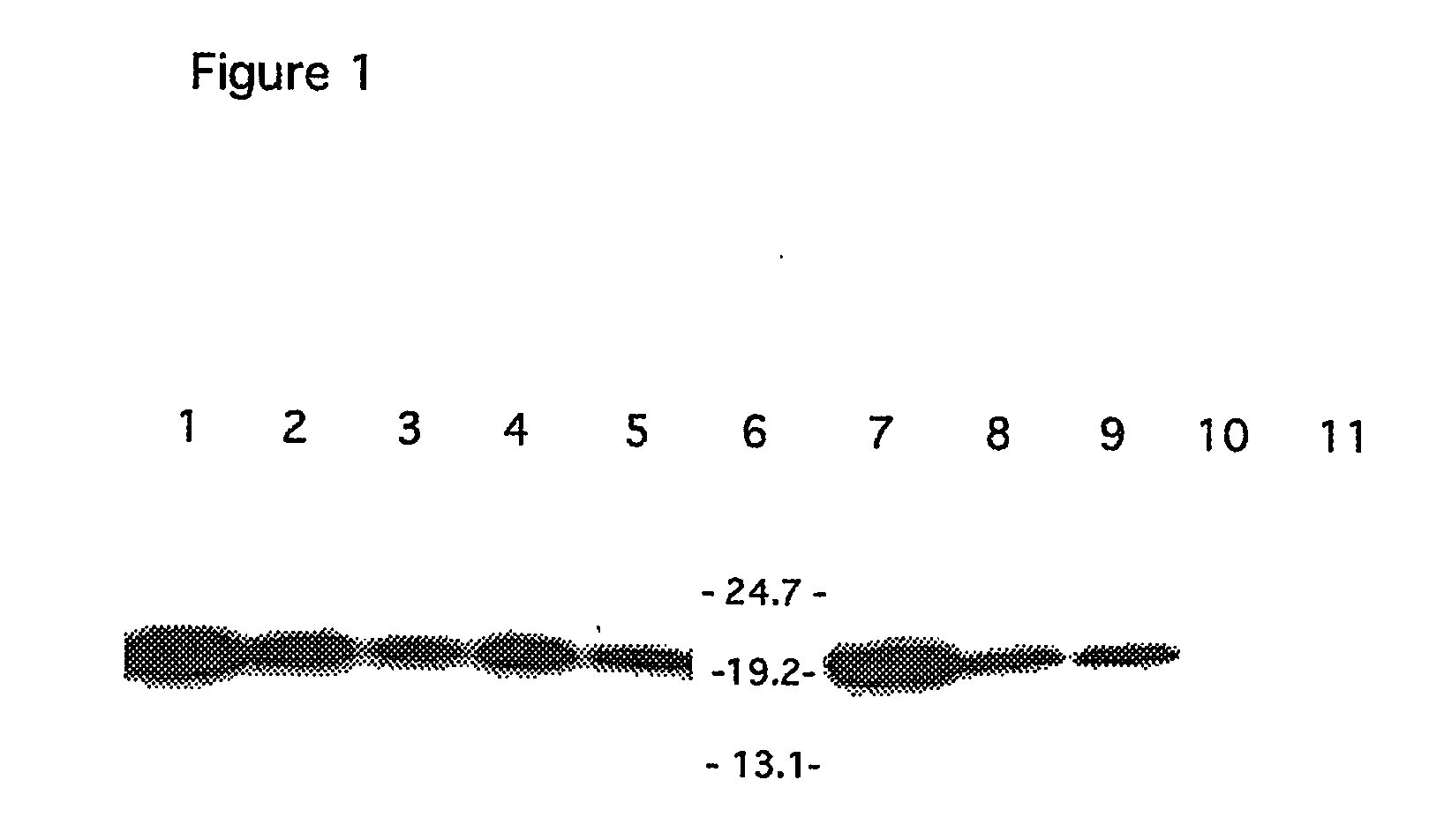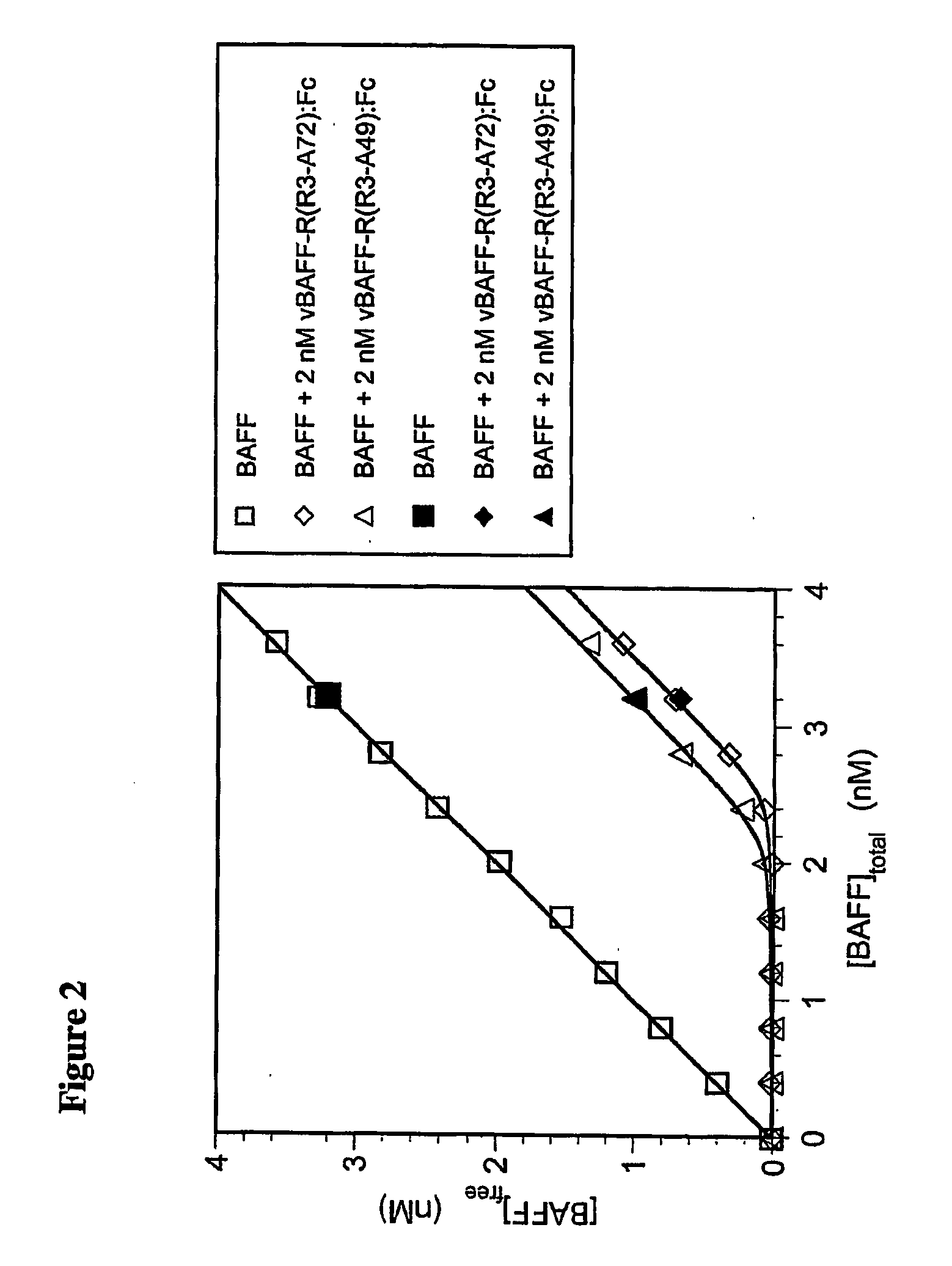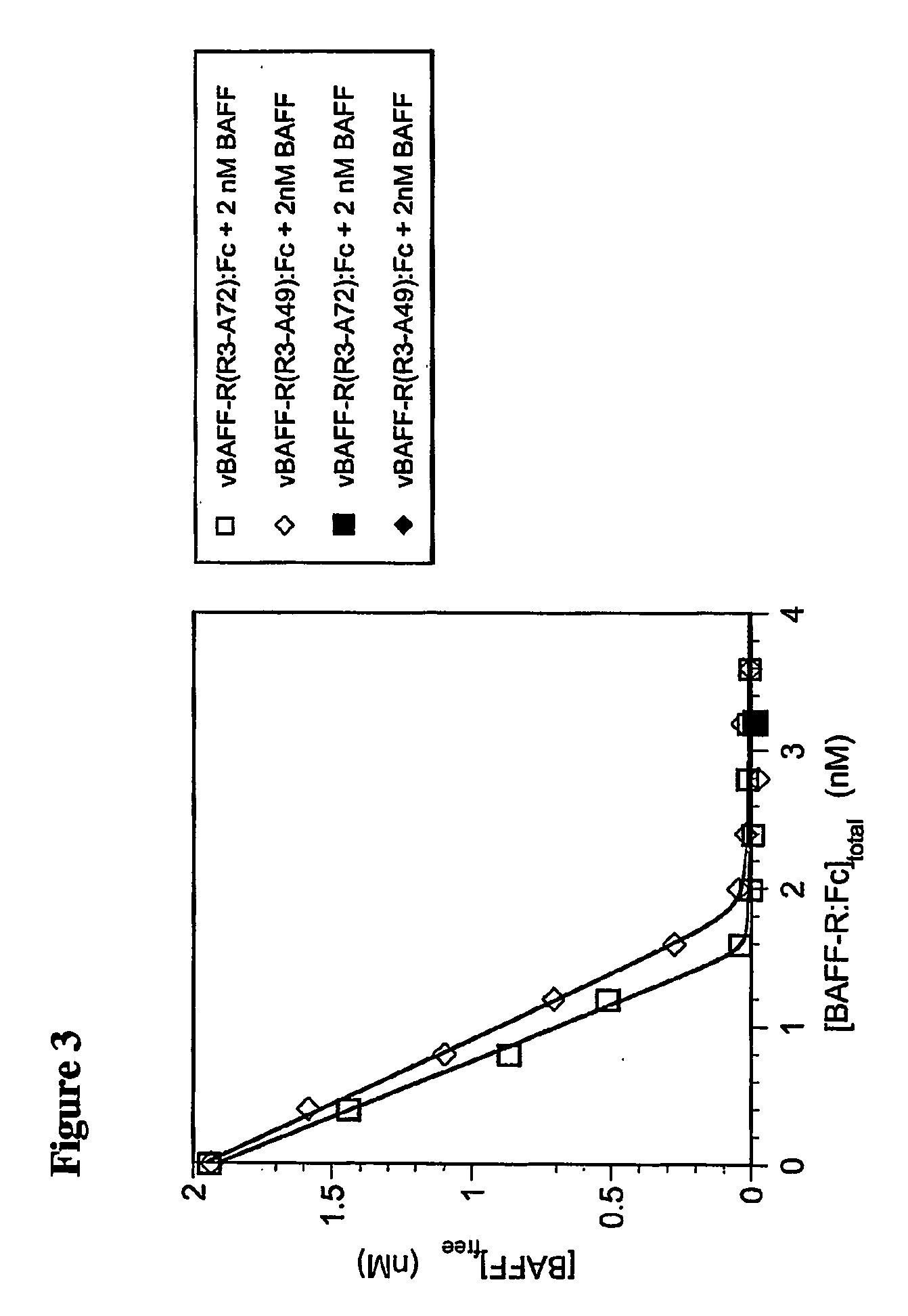Truncated baff receptors
a baff receptor and ligand technology, applied in the direction of dna/rna fragmentation, peptide/protein ingredients, fusion polypeptides, etc., can solve the problems of o-linked glycans, difficult to determine the exact number and location of glycans, and prevent prediction, so as to reduce the propensity for aggregation, improve the glycosylation pattern, and the ability to bind
- Summary
- Abstract
- Description
- Claims
- Application Information
AI Technical Summary
Benefits of technology
Problems solved by technology
Method used
Image
Examples
example 1
[0088] This example describes the generation and analysis of various peptide deletions within the receptor domain of wild type hBAFF-R:Fc. These deletion mutants were analyzed for ability to bind hBAFF.
[0089] Double stranded oligonucleotide cassettes with cohesive ends that encode various in-frame peptide deletions within the hBAFF-R domain of hBAFF-R:Fc were designed and synthesized. The oligonucleotide cassettes were ligated with hBAFF-R:Fc containing vectors with complementary termini. Cassettes were designed to eliminate residues either N-terminal to the cysteine-rich domain (CRD) or C-terminal to the CRD in the stalk region.
[0090] The coding sequences for hBAFF-R:Fc deletions were subcloned into vectors for mammalian cell expression in 293EBNA cells. Expression plasmids were transfected into 293EBNA cells using Lipofectamine™ (Invitrogen). Transfected cell supernatants were harvested at 48 hr post-transfection.
[0091] Expression was evaluated by non-reducing SDS-PAGE followed...
example 2
[0094] This example describes the design, construction and sequence of a version of vBAFF-R(R3-A72):Fc containing a truncated BAFF-R stalk domain. The fusion protein vBAFF-R(R3-A49):Fc was created in order to remove the four potential O-linked glycosylation sites located at residues S50, S51, T56, and S63 of SEQ ID NO:1.
[0095] A double stranded oligonucleotide cassette with cohesive ends was used to replace nucleotides encoding BAFF-R amino acid residues C33 to A72 with nucleotides encoding amino acid residues C33 to A49 by ligation into the same sites in the vBAFF-R(R3-A72):Fc coding sequence. The sequences of these oligonucleotides, baf-911 and baf-912, are shown in SEQ ID NO:8 and SEQ ID NO:9. This oligonucleotide replacement results in the elimination of residues S50A72 of vBAFF-R(R3-A72):Fc.
[0096] The vBAFF-R(R3-A49):Fc coding sequence was subcloned into vectors for mammalian cell expression, specifically, 293EBNA or CHO cells. Expression plasmids were transfected into 293EBN...
example 3
[0097] This example illustrates the determination of the apparent binding affinity of both full-length vBAFF-R:Fc and truncated vBAFF-R:Fc for BAFF by analysis of their solution phase binding by BIAcore™.
[0098] All measurements were made on a BIAcore™ 3000. BCMA-Fc was immobilized to a high density on one quadrant of a CM5 chip, and one quadrant was left underivitized as a background control.
[0099] A standard curve for the amount of free BAFF was established by running successive samples containing various concentrations of BAFF over the chip surfaces. The initial rate of binding (V1) was plotted as a function of BAFF concentration. Under the conditions used V1 is proportional to the amount of free BAFF in solution.
[0100] As shown in FIG. 2, the equilibrium binding of BAFF to each form of BAFF-R:Fc, in solution, was determined by pre-mixing various concentrations of BAFF with a fixed amount of either vBAFF-R(R3-A72):Fc or vBAFF-R(R3-A49):Fc, and allowing these solutions to come t...
PUM
| Property | Measurement | Unit |
|---|---|---|
| Composition | aaaaa | aaaaa |
| Affinity | aaaaa | aaaaa |
Abstract
Description
Claims
Application Information
 Login to View More
Login to View More - R&D
- Intellectual Property
- Life Sciences
- Materials
- Tech Scout
- Unparalleled Data Quality
- Higher Quality Content
- 60% Fewer Hallucinations
Browse by: Latest US Patents, China's latest patents, Technical Efficacy Thesaurus, Application Domain, Technology Topic, Popular Technical Reports.
© 2025 PatSnap. All rights reserved.Legal|Privacy policy|Modern Slavery Act Transparency Statement|Sitemap|About US| Contact US: help@patsnap.com



